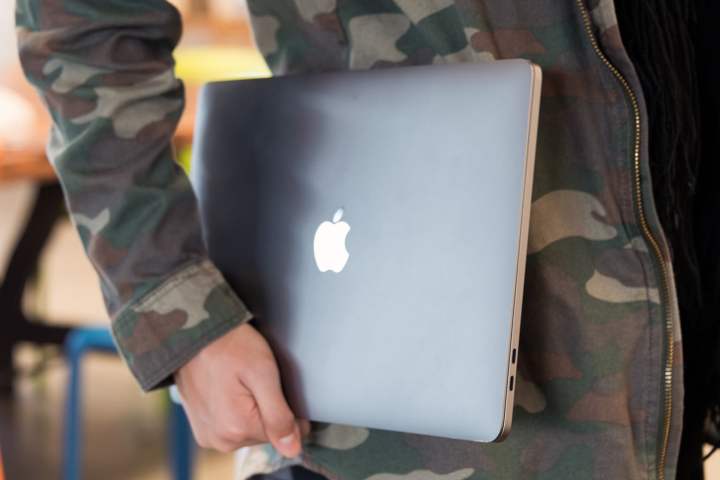
There’s no doubt Apple will update its MacBook Pros with eighth-generation Intel processors, but now a new benchmark listed on Geekbench gives us a better view at the specific chips we’ll see in the upcoming devices. In the case of the next 13-inch MacBook Pro with Touch Bar, one variant will rely on the Intel Core i7-8559U processor.
The current 13-inch MacBook Pro with Touch Bar released in the middle of 2017 sports the “MacBookPro 14,2” device ID whereas the new benchmarked model lists as the “MacBookPro 15,2.” As a reference, the 13-inch MacBook Pro without the Touch Bar has the “MacBookPro 14,1” device ID whereas the 15-inch MacBook Pro with the Touch Bar sports the MacBookPro 14,3” device ID. Models released in 2016 have device IDs based on “13.”
The benchmarked MacBook Pro clocked at 4,448 in the single-core score and 16,607 in the multi-core score using Intel’s Core i7-8559U processor. This chip was part of Intel’s third wave of eighth-generation processors introduced in April. The first eighth-generation chips, which were based on a seventh-generation design, focused on ultra-thin notebooks in August 2017 while the second wave targeted desktops toward the end of the year.
The Core i7-8559U consists of four cores with a base speed of 2.7GHz and a maximum speed of 4.5GHz. It has a maximum power draw of 28 watts although Apple is expected to throttle down the processor’s speed to reach a lighter 20-watt power draw to extend the MacBook Pro’s battery uptime. The chip sports an integrated Iris Plus Graphics 655 component as well.
Across the three current MacBook Pro models, you will find eight processor options pulled from Intel’s seventh-generation “Kaby Lake” processor portfolio. The two Touch Bar-packed MacBook Pros offer three processor options each while the Touch Bar-free 13-inch MacBook Pro only relies on two chips. The CPUs in the 15-inch models promise high-performance graphics and four cores whereas the chips in the 13-inch models are built for long battery life.
The benchmark arrives after another benchmark appeared showcasing what may be the next-generation 15-inch MacBook Pro with Touch Bar. Listed with the “MacBookPro 14,3” device ID, the Apple laptop managed a single-core score of 4,902 and a multi-core score of 22,316 using Intel’s eighth-generation Core i7-8750H six-core processor. This chip was also just released in April, and one of the first Intel-based CPUs to introduce six cores to the laptop market.
As the specifications show, the Core i7-8750H has a base speed of 2.2GHz and a maximum speed of 4.1GHz. It also draws 45 watts of power, but it can be tuned down to consume only 35 watts if needed. The chip also packs 9MB of cache and an integrated UHD Graphics 630 component. What’s interesting is that the chip appears in a current 15-inch MacBook Pro unless the listed device ID in the benchmark is incorrect.
While we were disappointed in not seeing new hardware during Apple’s developer conference in early June, the benchmarks show that the company is lining customers up with the latest from Intel when the devices go public later this year.
Editors' Recommendations
- The XPS 16 is fighting an uphill battle against the MacBook Pro
- A new wave of powerful laptops rises to challenge the MacBook Pro
- The biggest threat to the MacBook this year might come from Apple itself
- Why you should buy a MacBook Pro instead of a MacBook Air
- Which color MacBook should you buy? Here’s how to pick


